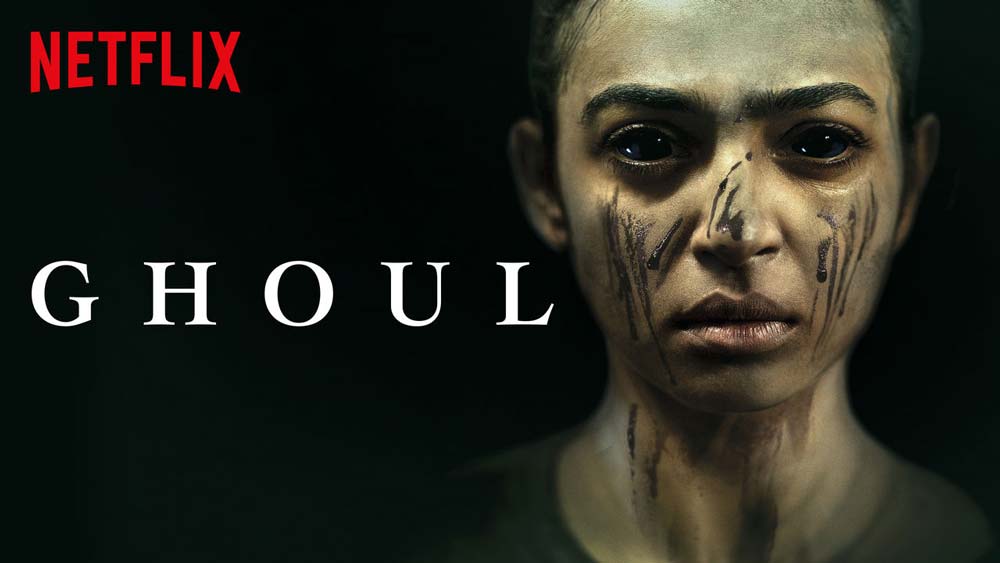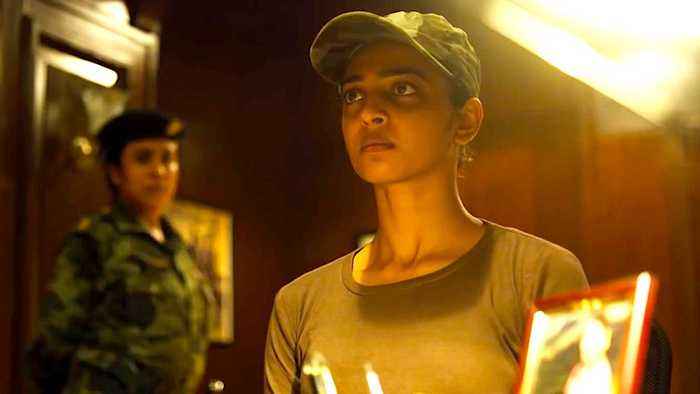
One controversy is barely over and we must prepare for another. Normally when I review a series, I watch the first few episodes before I start writing. But since this is a Netflix miniseries so within a few minutes of watching it I was enthralled and spooked. India’s entertainment is synonymous with Bollywood: heroes and heroines, big fat weddings, cheesy song-and-dance love stories. But Indians love action, and thrillers are becoming more popular. Produced by the makers of ‘Get Out’, ‘Insidious’ and ‘Udta Punjab’, ‘Ghoul’ refreshingly combines elements of horror and the supernatural with current social and political issues.
The opening few minutes of Ghoul, Netflix’s latest Indian original, unleash some of the bravest filmmaking you’ll see this year – in fact, the entire first episode is brimming with confrontational carelessness – and I mean this as the highest compliment. To put it in perspective, if you thought the Rajiv Gandhi line in ‘Sacred Games’ was delightfully irresponsible – especially now, especially here – wait till you watch Ghoul.
Ali Saeed (Mahesh Balraj) is a prisoner being interrogated regarding anti-nationalist behavior. Nida Rahim (Radhika Apte) is a junior interrogator trying to cut her teeth and impress her bosses while fighting the demons of her father, who protested against the government.
After five years on the lAM, Saeed has surrendered and is being held in a remote military facility. But he very quickly takes control of the situation from his interrogators. With sudden movements, animal sounds and naming the family members of interrogators, Saeed throws them off their game.
I often watch horror and thrillers, but am rarely scared. Here, the portrayal of contemporary issues of nationalism and terror in India combined with the supernatural, made me jump a couple of times. It is a believable take on a corrupt penal system and questionable interrogation tactics. Classic Indian cinematic drama is employed for extra effect, with senior interrogator Sunil Dacunha’s (Manav Kaul) monologue about being a hero, committed to his country and a loyal nationalist.
The intensity of the narrative and the environment are evoked through cinematography, lighting and set design. In one very graphic scene, a character is shot in the head, and blood splatters on the wall behind, but beautifully. Sparse, concrete rooms create echoes and dark lighting maintains an eerie tone. Grainy surveillance videos of torture rooms with equipment but without people are chilling.
In episode two, an unknown connection is implied between Rahim and Saeed, merely by their glances. And, while his sleep is prevented as an act of torture, hers is disturbed by vivid nightmares of a cloaked man.
The relationship between Rahim and a senior female colleague defies stereotypes of Indian women being powerless and homebound. These two officers connect through conversation, with the senior offering support, but her strategy for professional success is different. She tells Rahim she enjoys her job, which is to strip women bare, alluding to her sexuality. Rahim chooses a more intellectual approach, talking to Dacunha about interrogation strategy. This portrayal of Indian women as contrary to western stereotypes enhances the show’s appeal.
The elements are all there – a blazingly original idea, Jay Oza’s claustrophobic and atmospheric visuals, and a strong, simmering performance by Netflix’s favorite Indian child, Radhika Apte. Perhaps this could turn into our own version of ‘The Handmaid’s Tale’.
My Verdict
My Ratings
5
I can’t wait to watch the last part of the series and then re-watch it all over again. You should, too.








